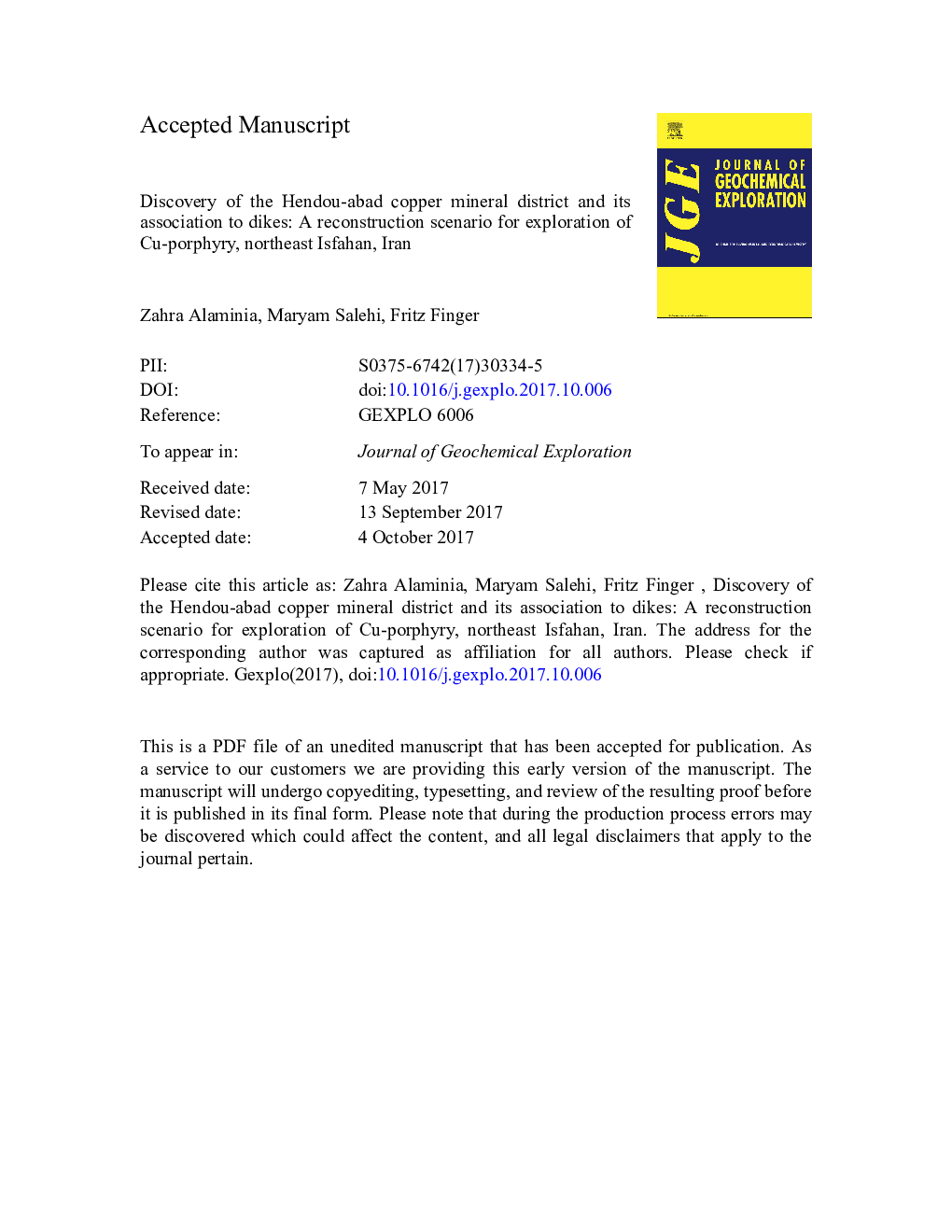| کد مقاله | کد نشریه | سال انتشار | مقاله انگلیسی | نسخه تمام متن |
|---|---|---|---|---|
| 5754442 | 1620876 | 2017 | 35 صفحه PDF | دانلود رایگان |
عنوان انگلیسی مقاله ISI
Discovery of the Hendou-abad copper mineral district and its association to dikes: A reconstruction scenario for exploration of Cu-porphyry, northeast Isfahan, Iran
ترجمه فارسی عنوان
کشف معادن مس معدن هندو آباد و ارتباط آن با رودخانه ها: یک سناریوی بازسازی برای کاوش کردن کورنوفیری، شمال شرق اصفهان، ایران
دانلود مقاله + سفارش ترجمه
دانلود مقاله ISI انگلیسی
رایگان برای ایرانیان
موضوعات مرتبط
مهندسی و علوم پایه
علوم زمین و سیارات
زمین شناسی اقتصادی
چکیده انگلیسی
The Hendou-abad copper mineral district is located along the eastern margin of the central part of Urumieh-Dokhtar Magmatic Arc (UDMA). The mineralization is hosted in the Late Eocene basaltic andesite and trachybasalt, where it is associated with epidote, calcite, and quartz as alteration minerals, and red, white, and green breccias. Two main events of mineralization with alteration have been distinguished: hypogene and supergene. Abundant parallel dike swarms intrude Late Eocene volcanic rocks of the Henduo-abad. The Hendou-abad dikes are seen as a few cm to 4Â m wide and <Â 1200Â m long. The purpose of this work was to survey their petrogenesis and the tectonic implication of the dikes. Further, to investigate the relationship between dikes and known copper mineralization in Hendou-abad, and then examine exploration potential in adjacent areas. The Hendou-abad dikes, based on trend, relative age, and geochemical composition, are divided into two groups: early and late dikes. The geochemical character of these dikes displays an arc setting and the late dikes show higher contents of Nb, Zr, P, K, Rb, Ba, and slightly elevated Ti. The geochemical composition of the dikes suggests two magmatic stages over time: a subduction-modified mantle source is thought of for the host basaltic andesites and the early dikes in a primitive arc stage, while an enriched asthenospheric mantle source is pictured for the late dikes in a later, more mature arc stage. Structural evidences from field-work of dikes, strike-slip and thrust faults, and microscopic studies of the associated hypogene mineralization imply that they may have formed through north-south directed extension during an uplift event. The pattern of dike orientations, their intense propylitic alteration, and the spatially association with mineralized breccias, sheeted calcite, and mineralized quartz veins, could suggest emplacement of a porphyry stock at depth. Our data show that the east-trending green dikes are associated with red and green breccias in southern Ardestan and that they could be used as an exploration target for copper mineralization.
ناشر
Database: Elsevier - ScienceDirect (ساینس دایرکت)
Journal: Journal of Geochemical Exploration - Volume 183, Part A, December 2017, Pages 88-101
Journal: Journal of Geochemical Exploration - Volume 183, Part A, December 2017, Pages 88-101
نویسندگان
Zahra Alaminia, Maryam Salehi, Fritz Finger,
